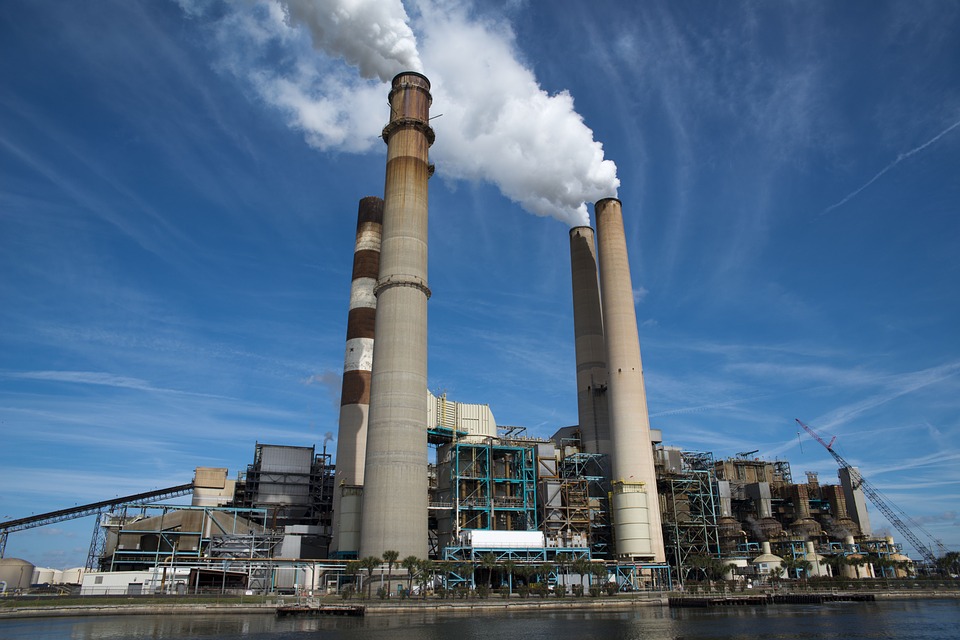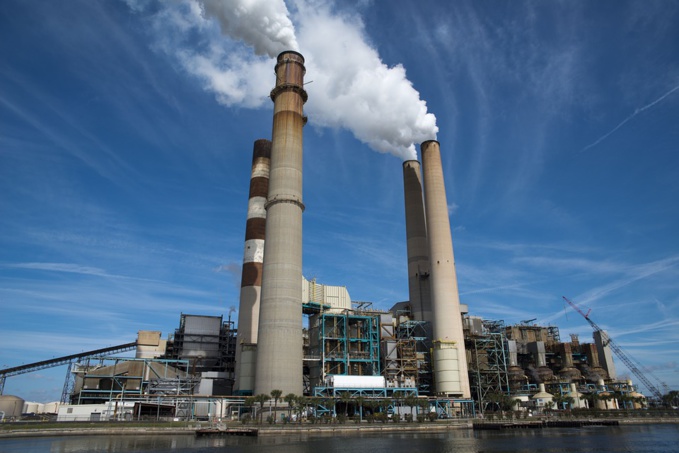Power station Hazelwood in the Australian state of Victoria commenced to generate electricity 52 years ago. A bright symbol of the era when coal was the king, Hazelwood was one of the most "dirty" in Australia. The station used brown coal, which pollutes the air much more than black coal. The power plant was officially closed on March 31.
A few days before that, Munmorah, a coal station in northern Sydney, destroyed its chimneys.
In the past seven years, Australia has already eliminated ten such generators, but coal still produces about three-quarters of the country's total electricity.
A similar trend is observed throughout Asia, which accounts for two thirds of the world's demand for coal. The largest economies (with the exception of Japan) are either closing old stations, or are refusing to build new ones.
This trend puts into question the future of the coal industry.
There are two reasons to explain emerging overabundance of production capacity in countries such as China, India or Australia (South-East Asia is still very dependent on coal).
First, demand for electricity is stagnating, decreasing or is growing more slowly than expected, which increases financial burden for coal-fired power plants.
Secondly, countries are actively looking for alternative energy sources, primarily renewable ones, in order to reduce environmental pollution and carbon emissions. As cost of renewable energy resources decreases, coal becomes less attractive, British magazine The Economist notes.
The main threat to the coal sector is that economic growth nowadays doesn’t depend on the electricity that much; that is, it takes less energy to obtain the same level of growth.
Rich countries are turning from industrial production to services, using more and more LED lighting and producing energy-saving products such as refrigerators and air conditioners.
According to the International Energy Agency, Australia and Japan have the lowest intensity of energy use among developed economies.
China and India are moving in the same direction. Primary demand for electricity in the Middle Kingdom decreased in 2015, the first such decline in 20 years. This basically indicates a gradual departure from heavy industry and implementation of energy-saving policies.
In the same year, the demand for coal in China collapsed by about 4%. The same affect a 5% increase in electricity demand in India, which is lower than the country’s GDP as a whole (about 7%).
Both Indian and Chinese authorities in the past greatly overstated future growth in demand for electricity. This led to the fact that coal-fired power plants in both countries are not operating at full capacity, says expert of the American Institute of Energy Economics and Financial Analysis Tim Buckley.
According to CoalSwarm’s March report, developers in India and China have recently abandoned construction of new coal-fired power plants with a total capacity of 68 GW, although generation at 145 GW and 50 GW is still underway, respectively.
The Central Electricity Authority of India does not see any reason for construction of new coal-fired power plants in the next decade, as existing enterprises are not fully utilized. "Production of coal-based electricity becomes unprofitable," said former Energy Minister of India.
source: economist.com
A few days before that, Munmorah, a coal station in northern Sydney, destroyed its chimneys.
In the past seven years, Australia has already eliminated ten such generators, but coal still produces about three-quarters of the country's total electricity.
A similar trend is observed throughout Asia, which accounts for two thirds of the world's demand for coal. The largest economies (with the exception of Japan) are either closing old stations, or are refusing to build new ones.
This trend puts into question the future of the coal industry.
There are two reasons to explain emerging overabundance of production capacity in countries such as China, India or Australia (South-East Asia is still very dependent on coal).
First, demand for electricity is stagnating, decreasing or is growing more slowly than expected, which increases financial burden for coal-fired power plants.
Secondly, countries are actively looking for alternative energy sources, primarily renewable ones, in order to reduce environmental pollution and carbon emissions. As cost of renewable energy resources decreases, coal becomes less attractive, British magazine The Economist notes.
The main threat to the coal sector is that economic growth nowadays doesn’t depend on the electricity that much; that is, it takes less energy to obtain the same level of growth.
Rich countries are turning from industrial production to services, using more and more LED lighting and producing energy-saving products such as refrigerators and air conditioners.
According to the International Energy Agency, Australia and Japan have the lowest intensity of energy use among developed economies.
China and India are moving in the same direction. Primary demand for electricity in the Middle Kingdom decreased in 2015, the first such decline in 20 years. This basically indicates a gradual departure from heavy industry and implementation of energy-saving policies.
In the same year, the demand for coal in China collapsed by about 4%. The same affect a 5% increase in electricity demand in India, which is lower than the country’s GDP as a whole (about 7%).
Both Indian and Chinese authorities in the past greatly overstated future growth in demand for electricity. This led to the fact that coal-fired power plants in both countries are not operating at full capacity, says expert of the American Institute of Energy Economics and Financial Analysis Tim Buckley.
According to CoalSwarm’s March report, developers in India and China have recently abandoned construction of new coal-fired power plants with a total capacity of 68 GW, although generation at 145 GW and 50 GW is still underway, respectively.
The Central Electricity Authority of India does not see any reason for construction of new coal-fired power plants in the next decade, as existing enterprises are not fully utilized. "Production of coal-based electricity becomes unprofitable," said former Energy Minister of India.
source: economist.com



















